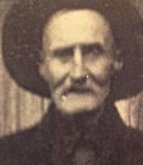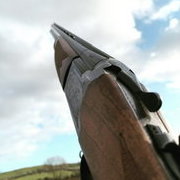-
Posts
814 -
Joined
-
Last visited
Profile Information
-
Gender
Male
-
From
Haworth,,West Yorks.
Recent Profile Visitors
3,196 profile views
-
I've spoken to a chum who is a museum conservator and he suggests the following. Take one clean roasting dish and put a good thick layer of baking soda in it. Place the wire base grid in and stand the book on it, upright with the pages spread. Carefully cover everything with a bin liner and leave it in a safe place for 4/5 days. He uses this method to reduce the the damp, fungal smells often found in long stored books and manuscripts. It probably won't remove it all straight away but can be repeated as often as you like. Likewise, standing the book in any safe place, upright with the pages spread will, over time reduce the smell. Good luck !!
-
I usually buy from the sealed bid auction several times a year. Its a simple process, register with them, pick a lot or lots and place a bid. Bear in mind that the estimates can be quite low and that commission is 25% when deciding on the bid you want to place. Whilst I regularly get some bargains within the estimates, I will place a bid at what I think its worth to me. They can be very helpful about collection and will, if you ask, take the gun to one of their Valuation days if its nearer to home for you. Alternatively they will RFD it for you. Unless you can get down there for an inspection of your chosen lot you are buying blind but thats the fun of auctions.
-
Another update. All the action work is now done and its as tight as a drum. The triggers were on the light side (barely 2lb pull on the RH barrel) and they are now both around 4lb which is similar to the Baikal 54 that I use regularly. I may have mentioned that the chokes are both nearly full on each side and thought that they would probably need opening out somewhat,,,,how wrong I was !! I was out early this morning after crows on a new drilling and the gun was a revelation. Eley Select 30g No.6 at anything between 30 and 50yrds was absolutely mustard and came away with 13 for 20. Nearly all were shot after the first approach to the decoys when they circle higher up. Tight chokes are the future, if they pattern as well as these do !
-
Subject to finalising the logistics, the gun should be in the hands of Acerforestry before too long. Thanks for all the enquiries and kind comments.
-
Haworth is quite a long way north above Staffordshire so it would be quite a trip for you. have a look on google maps to see the details.
-
I'm in Haworth, West Yorkshire so perhaps a little too far away.
-
Once again, the pressure from Holts treasure chest needs me to thin things out in the cabinet. This Brno 301 is the one I described in some detail last year on here and a quick search will reveal all the images. Its been bored out to 1/4 and 1/2 chokes (10 and 20 thou under bore size) and is absolutely rock solid. I used it in the hide last year and it patterned well with Eley Select 30g No.6. Its something slightly different but built to last. Collection only please
-
That's it, just push the trigger firmly forwards to change to the top barrel. Its only a very slight click that you feel rather that hear. It reverts to normal when you re cock the gun.
-
Just a thought, do you know how the barrel selector works on this gun ? Quite a few don't.
-
Its an IJ 27 and its the later model because of the single trigger and probably fixed chokes, but not one of the last ones with multi chokes. The Model 12 had through bolts in the fore end wood. Try to fit your existing fore end iron to the new wood as it can be a bit of a faff (Though quite do-able) fitting new ironwork. Good luck.
-
Where else would you find in a chapter titled "Mutton" such detailed information concerning the same, "Put a bullet, or humane killer bolt at right angles through the sheep's skull, in the centre of the forehead and an inch above the level of the eyes". A delight to read !
-
A little progress with the Beretta, stripping, inspecting and reassembling the action. Everything seemed in good order apart from some wear marks on the sear pivot pin which was easy to re-make and fit. The images show the separate pivot pin for each tumbler and what looks like a possibly replaceable firing pin end on it. Once I had made a new mainspring compressing tool ( from a section of Yew log which I rescued from a bonfire years ago ! ) it all came apart, and went back together, easily. The top lever spring was a small, button topped coil spring (blue arrow) and the bolt was secured to the top lever shaft it by a shaped screw in pin. It was very easy to remove the bolt without disturbing the top lever components. Whilst I was in there, I tapped out the hinge pin after removing the small retaining screw on the front of the knuckle. There was some signs of wear there as expected and the next job is to make and fit a larger one to re fit the gun back on face. Last of all will be to tighten the bites, probably by re making the bolt as I cannot find a laser welder nearby prepared to do the work. I just need to get the choked opened out and all will be finished. I have decided to leave most of the discolouration ( Patina !) on the metalwork and the knocks and dents on the woodwork as , to me , these reflect its history and passage through its 85 years. A final note, does anyone know the function of the grooves on the standing breech pictured below. Some think its to do with preventing pierced primer blowback into the action but I'm not convinced. Another question. When I was re fitting the sear springs I noticed, obviously, that as they were tightened the (trigger) pressure required to lift the sear was increased. Could this be a method of adjusting trigger pressure ?
-
An update . There are couple of mechanical issues to deal with, re-hinging as its a couple of "thou" off the face and tightening up the bites a fraction but today it's a small repair to the stock under the trigger guard where one of the wood screws has stripped its thread. Straightforward but satisfying. I enlarged the hole a little, made a dowel the right size and about 1" longer than required, scored a groove along each side to let air out and glued it overnight with Titebond. The exposed bit of dowel I used as a sight, together with a couple of pieces of tape to make sure that I drilled at the right angle to get the screw sitting neatly in the metalwork. Trimmed the excess dowel away and drilled a new hole. Stained the new wood to match its surroundings, waxed the screw and that was that. I have left a touch of timing to tighten up on the screw to allow for any settling in future. More to come as it happens.
-
We take a house on Tresco, south of Old Grimsby and the Blockhouse at Borough. Lots of boats of all sorts come into the moorings there.
-
Harris in April and September, Isles of Scilly in June.






